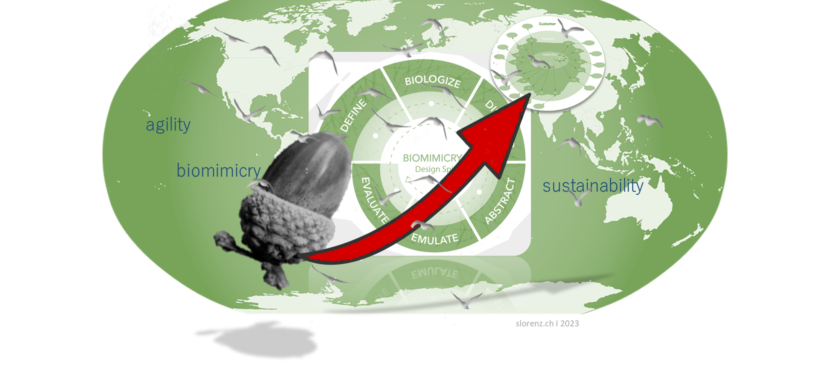A topic that fascinates me very much at the moment is the development of a sustainable agile organisation with the inclusion of biomimicry. I can highly recommend the book by Janine Benyus, “Biomimicry, Innovation inspired by Nature”. I am convinced that with this topic, a new path can be worked out, especially on the normative level, which holistically expresses the relevance of innovation and sustainability and clarifies the meaningfulness for the change of epoch.
📣 If we manage to put this image into words in a clear and transparent way, the transformation towards it will also be actively supported by the employees.
Biomimicry refers to the application of principles, processes and systems from nature to technology and human society. It is about learning from nature and finding solutions that are ecologically sustainable, efficient and resource-saving.
The idea behind biomimicry is that over millions of years, nature has found many complex and effective solutions to problems we still face today. For example, nature has developed strategies to protect itself against diseases and pests, to use energy efficiently, to find food and to regulate the climate.
By looking at and learning from these strategies and solutions from nature, we can develop more effective and sustainable technologies and systems. A well-known 🔍 example of biomimicry is Velcro, which was inspired by the way seeds stick together (=> Velcro is a brand of hook-and-loop fasteners that was invented in 1948 by Swiss electrical engineer George de Mestral).
Biomimicry is applied in various fields, including architecture, energy production, agriculture, medicine and transport. For 🔍 example, buildings can be designed to use natural ventilation and lighting to save energy. Materials can also be developed that mimic biological materials, making them more environmentally friendly and sustainable.
A sustainable agile organisation is characterised by a combination of sustainable practices and agile working methods. Such an organisation has the ability to adapt quickly to change while being environmentally and socially responsible.
By applying biomimicry principles, organisations can find sustainable solutions while improving their agility. One 🔍 example is the application of closed-loop principles, which are based on the biological concept of a closed cycle. This means that materials and resources are always reused and no waste is produced.
A sustainable agile organisation can also learn from natural diversity and integrate it into its working methods. An 🔍 example of this is promoting diversity and inclusion within the organisation to create a broader perspective and a higher capacity for innovation. In nature, different species have different strengths and capabilities that help make ecosystems more resilient and adaptable.
Another 🔍 example of the application of biomimicry in a sustainable agile organisation is the creation of networks and collaborations based on natural systems such as swarms and swarm intelligence. These systems are effective because they are based on self-organisation and collaboration and are focused on the needs of the group.
In summary, the application of biomimicry principles can help companies become more sustainable and agile, addressing the complex challenges of SDG 2030 while aligning with the needs of the environment and society. By combining sustainability and agility, companies can respond more quickly to change while having a positive impact on the environment and society.
💬 It is not an easy path. But it is not getting easier. That’s why we should start today… 📌
I look forward to your feedback and wish you a happy Easter.
Many thanks & best regards
Stephan





